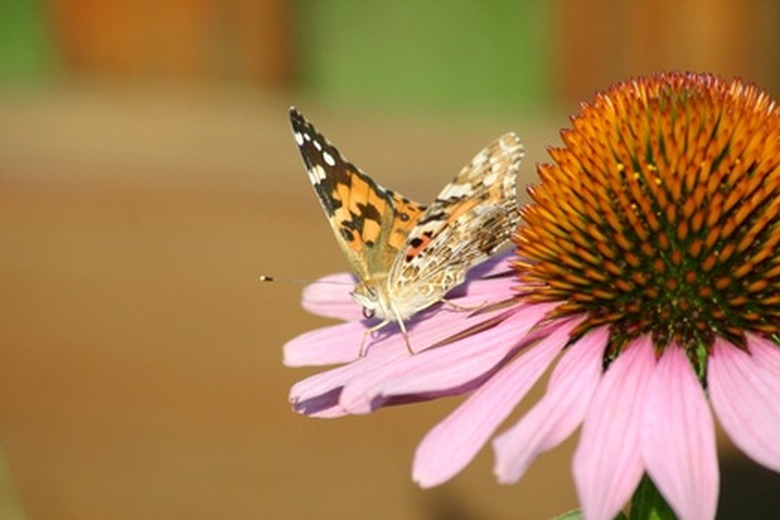How To Harvest Echinacea Seeds
Echinacea is also referred to as purple coneflower. It can grow to a height of 5 feet tall, and its purple petals attract butterflies from a distance. Echinacea makes a dramatic backdrop to any flower bed, and if you currently have some growing in a particular spot, but would like to plant them in other areas of your yard, you can easily do so by harvesting the seeds. According to the USDA National Plant Data Center, you should not harvest echinacea seeds until after their second year of growth.
Step 1
Stop watering your echinacea plants when the cones, which are also the seed heads, begin to mature. The seeds don't need additional water to develop, and continued watering will simply prolong the seed drying time. The time to stop watering is early autumn.
- Echinacea is also referred to as purple coneflower.
- According to the USDA National Plant Data Center, you should not harvest echinacea seeds until after their second year of growth.
Step 2
Select your best echinacea flowers to harvest the seeds from.
Step 3
Cut the cone heads off, taking 6 inches of stem in the cutting. Place the cut heads, upside down, in a paper bag.
Step 4
Allow the cone heads to dry for up to a week. You will want to make sure there are not so many in the bag that there is not adequate air flow, and you must place the bag in a dry area.
Step 5
Put on garden gloves and break the cone heads open over a mesh screen. The screen will catch the seeds and cone debris. Separate the debris from the seeds.
- Select your best echinacea flowers to harvest the seeds from.
- Cut the cone heads off, taking 6 inches of stem in the cutting.
Step 6
Store the seeds in a paper envelope or plastic bag in a dry, cool location.
Seeds On Echinacea?
Echinacea species, commonly known as coneflowers, are rugged prairie wildflowers native to North America. Coneflower attracts butterflies and hummingbirds to the garden from summer until early autumn. The drooping, lavender, daisylike petals radiate from a spiny, purplish-brown, cone-shaped center. The cone, or seed head, holds seeds that develop in autumn. Harvest the seed heads when the seeds are plump and not thin and flat. Always harvest seed heads from the largest, healthiest blooms. Seeds left on the plant nourish birds throughout the winter, and those that remain on the ground in spring may reseed and grow new plants. If you wish to save the seeds for a future season, store them in a paper envelope, and then label the envelope, noting the type of seeds and the date of harvest. When properly stored, coneflower seeds last up to three years.
- Store the seeds in a paper envelope or plastic bag in a dry, cool location.
- Seeds left on the plant nourish birds throughout the winter, and those that remain on the ground in spring may reseed and grow new plants.
Things Needed
- Garden shears
- Paper bag
- Screen
- Garden gloves
- Paper envelopes
Warning
Do not allow moisture to get on seeds during storage, as it can cause mildew and contaminate the seeds.
Tip
Echinacea seeds can be stored for up to three years.
